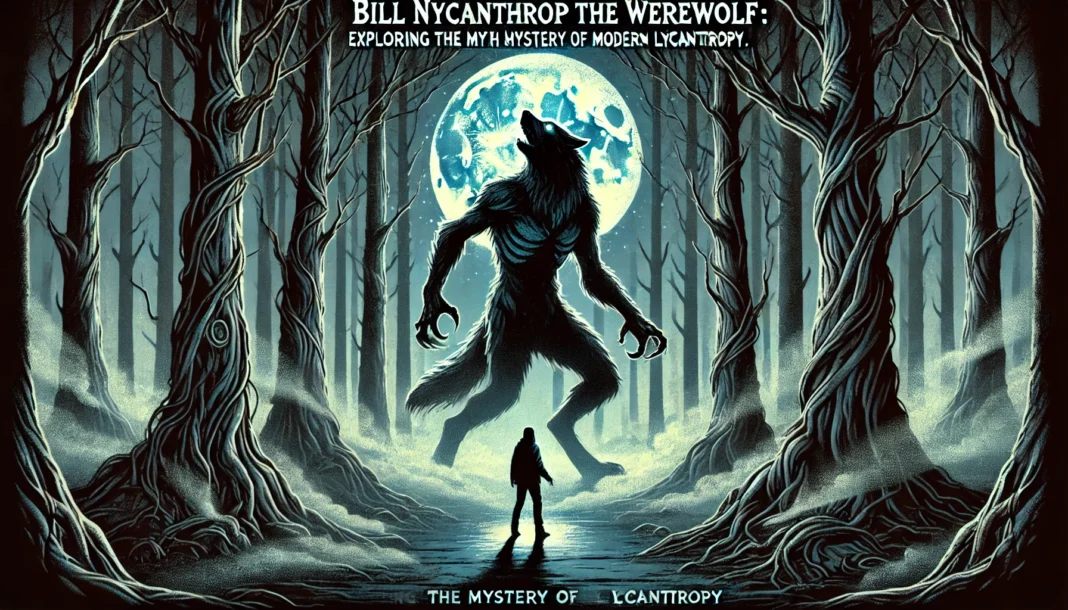Bill Nycanthrop the Werewolf has quickly become an intriguing figure in modern werewolf lore. Mixing elements of classic lycanthropy with fresh twists, his legend combines folklore, science, and mystery. With this new myth, enthusiasts and curious readers alike find themselves wondering who or what “Bill Nycanthrop the Werewolf” might represent. Let’s dive deep into the characteristics, possible origins, and cultural significance of Bill Nycanthrop’s story.
Who is Bill Nycanthrop?
At first glance, Bill Nycanthrop seems like an ordinary individual. However, his story takes a dark turn when we learn he may carry the curse of lycanthropy—the transformation from man to wolf. Bill’s name itself seems derived from “lycanthropy,” suggesting a connection to werewolf transformations. Unlike traditional werewolves from medieval European folklore, Bill Nycanthrop’s story incorporates elements of modern urban legends, with rumors of sightings in remote woodlands and small towns.
Origins of the Bill Nycanthrop Legend
Bill Nycanthrop’s story likely takes inspiration from historical werewolf legends across Europe, North America, and Asia, regions rich in shape-shifter lore. In these myths, ordinary humans transformed into wolves due to curses, magical rites, or even diseases.
According to popular myth, a person like Bill Nycanthrop could be “cursed” by coming into contact with another werewolf, inheriting the curse through a bite or scratch. This scenario aligns with both classic werewolf myths and pop culture versions of werewolves, such as those seen in movies like The Wolfman.
Characteristics of Bill Nycanthrop the Werewolf
Like other werewolves, Bill Nycanthrop exhibits some common lycanthropic traits:
- Transformation Under the Full Moon: Traditional lore often states that werewolves transform only during the full moon, succumbing to an uncontrollable urge to hunt. In Bill’s case, the full moon triggers a shift from man to beast.
- Physical Alterations: When Bill transforms, his body undergoes significant physical changes—elongated limbs, sharp claws, and enhanced senses, especially sight and smell. The hallmark of his transformation is his “wolf’s eyes,” which glow with an unnatural light, allowing those who encounter him to recognize his otherworldly nature.
- Heightened Instincts: As a werewolf, Bill’s senses of smell and hearing become intensified, enabling him to detect sounds and scents over great distances. According to lore, this heightened sensitivity might also influence his temperament, making him more aggressive and instinctual.
The Science Behind Bill Nycanthrop’s Lycanthropy
In folklore, lycanthropy was not only considered a supernatural phenomenon but also linked to misunderstood medical conditions. For example, clinical lycanthropy is a rare psychiatric syndrome in which individuals believe they can transform into an animal. People exhibiting symptoms of this condition report sensations and urges they associate with wolves, which may involve growling, attempting to “hunt,” and an extreme aversion to social norms.
In Bill’s case, the legend may point to a psychological explanation—he could be a case study of clinical lycanthropy, acting out werewolf-like behaviors due to psychological triggers.
Another possible influence is hypertrichosis, a condition that causes abnormal hair growth over the body, which in the Middle Ages led to accusations of werewolf-like transformations.
Mythology and Culture: How Bill Nycanthrop Relates to Traditional Werewolves
The story of Bill Nycanthrop shares characteristics with famous werewolves from myth and literature, including Peter Stumpp, known as the Werewolf of Bedburg, and the Beast of Gévaudan from French folklore. Each tale taps into societal fears of outsiders or cursed individuals who, due to unusual physical or behavioral traits, were ostracized and sometimes blamed for mysterious attacks.
Werewolf stories also have roots in Norse mythology, where the warriors known as Ulfhednar donned wolf skins and entered battle in a frenzied state. Bill Nycanthrop’s story could easily fit into this tradition as a contemporary “lone wolf” figure navigating modern society while struggling with his “curse.”
Bill Nycanthrop the in Popular Culture
Bill Nycanthrop the legend has potential as a character in modern media. His story may serve as a foundation for novels, graphic novels, or even films that explore themes of duality, transformation, and isolation. The idea of a modern werewolf character resonates well in today’s culture, which often reinterprets classic folklore with contemporary twists.
Additionally, Bill Nycanthrop the could represent broader themes of mental health, with his lycanthropic curse serving as a metaphor for the “beast within” many people battle in their personal lives. His story might even offer a unique perspective on how individuals manage anger, isolation, and the struggle to control primal urges.
Could There be Real-Life “Nycanthropes”?
Belief in real-life werewolves is rare today, but sightings of “wolf men” continue to circulate. Some attribute these sightings to mental illness, while others believe them to be hoaxes or misidentifications. However, for those who do believe in modern-day werewolves, Bill Nycanthrop the serves as a symbol of humanity’s ongoing fascination with shape-shifting creatures.
Historically, such stories may also stem from society’s attempts to explain unusual behavior or physical appearances. The werewolf archetype allows for the dramatization of psychological struggles and primal instincts, making figures like Bill Nycanthrop the symbols of humanity’s ongoing dance with its own darker side.
Conclusion
In the evolving legend of Bill Nycanthrop the Werewolf, we see a blend of traditional lycanthropy with elements of modern psychological theory and folklore. His story appeals to a new generation intrigued by the possibility of werewolves, shape-shifters, and hidden identities. As a character, Bill Nycanthrop the embodies the allure of transformation and mystery, resonating with readers who yearn for stories that capture both the supernatural and the deeply human.
Whether interpreted as a modern myth, psychological metaphor, or eerie legend, Bill Nycanthrop the Werewolf brings a fresh twist to ancient folklore. His tale reminds us that even in a modern world, the stories of old continue to captivate, haunting the imagination with possibilities that lie just beyond the shadows.
SEO Summary
- Focus Keyword: Bill Nycanthrop the Werewolf
- Secondary Keywords: werewolf legend, lycanthropy, modern werewolves
- Meta Description: Learn about Bill Nycanthrop the Werewolf, a modern take on the ancient legend of lycanthropy. This article explores his origins, characteristics, and cultural impact.
This guide introduces a new legend while incorporating relevant keywords, enhancing the article’s SEO appeal and engagement with werewolf folklore


